Seeking clarity on lazulite's allure and applications in gemology and healing? This mineral's rich blue colour captivates collectors, while its purported healing qualities intrigue holistic practitioners. Our in-depth guide navigates lazulite's origins, characteristics, and benefits without the myths.
Key Takeaways
-
Lazulite is a rare mineral with a captivating blue hue, treasured across cultures. Originating from regions like the Ural Mountains and also found in Austria, Canada, and the U.S., it is composed of aluminum, magnesium, iron, and phosphorus and created in high-grade metamorphic environments.
-
The gemstone is renowned for its visually striking blue-to-green colour variations, strong pleochroism, and rarity, which make faceted specimens highly valuable. Its mineral content influences its colour, and it possesses a monoclinic crystal structure with unique inclusions.
-
Lazulite possesses multifaceted healing properties that address physical, emotional, and spiritual well-being, including supporting immune and digestive systems, aiding mental stability, balancing chakras, and promoting spiritual growth through enhanced psychic awareness and meditation.
Unveiling the Mysteries of Lazulite
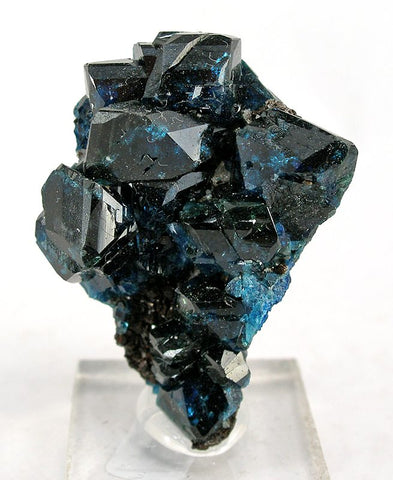
With its mesmerizing blue hues, Lazulite has a fascinating history that adds to its allure. First discovered in the Ural Mountains of Russia, this captivating gemstone has been found in various locations worldwide, including Austria, Canada, and the United States. The discovery of lazulite was first described in 1795 by Martin Heinrich Klaproth, marking an important moment in mineralogical history. It was named after the German word ‘lazurstein’, meaning ‘blue stone’, or the Arabic word for heaven, reflecting its captivating blue colour.
Known by several alternative names, including Blue Silicate, Blue Spar, and Azure Stone, lazulite continues to enchant gemstone enthusiasts worldwide. Lazulite is sometimes confused with similarly named minerals such as lazurite, but they are chemically and geologically distinct.
Mineral Composition and Formation
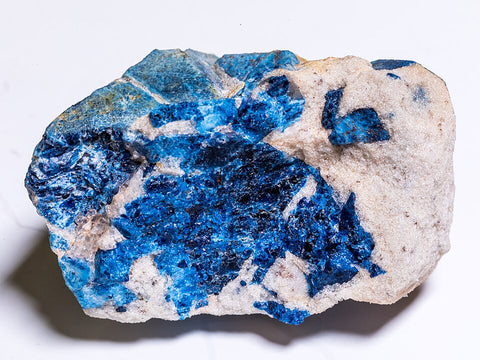
With its mesmerizing blue hues, Lazulite has a fascinating history that adds to its allure. First discovered in the Ural Mountains of Russia, this captivating gemstone has been found in various locations worldwide, including Austria, Canada, and the United States. The discovery of lazulite was first described in 1795 by Martin Heinrich Klaproth, marking an important moment in mineralogical history. It was named after the German word ‘lazurstein’, meaning ‘blue stone’, or the Arabic word for heaven, reflecting its captivating blue colour.
Known by several alternative names, including Blue Silicate, Blue Spar, and Azure Stone, lazulite continues to enchant gemstone enthusiasts worldwide. Lazulite is sometimes confused with similarly named minerals such as lazurite, but they are chemically and geologically distinct.
Mineral Composition and Formation
Exploring the composition of Lazulite reveals it as a rare treat for mineralogists. Lazulite is composed of:
-
Aluminum
-
Magnesium
-
Iron
-
Phosphorus
This unique blend is reflected in its chemical formula of MgAl2(PO4)2(OH)2. Lazulite forms a solid solution series with scorzalite, with varying Mg and Fe content (mg fe). The specific gravity of lazulite typically ranges from 3.0 to 3.1, which is lower than that of scorzalite, making specific gravity a useful property for distinguishing between these two minerals during identification.
The formation of this relatively rare mineral is a tale of geologic transformation. Lazulite is considered one of the rock-forming minerals in certain metamorphic rocks. High-grade metamorphic environments are where lazulite comes to life, where aluminum-rich sedimentary rocks like shale or clay-rich rocks undergo regional metamorphism. Lazulite is typically found in metamorphic terrains and is often found in association with minerals such as quartz, muscovite, and kyanite. This process involves the crystallization of minerals under extreme temperature and pressure conditions in the presence of phosphorus, creating this unique gemstone.
Mining Locations
Lazulite’s widespread presence worldwide bolsters its appeal. Beyond the Ural Mountains and Austria, lazulite has been discovered in countries such as:
-
Sweden
-
Canada
-
Madagascar
-
India
-
Brazil
Notable lazulite deposits are found in California, especially in Mono County at the Champion Mine, and in the White Mountains. Rapid Creek in Yukon, Canada, is also a significant source of gem-quality lazulite. Austria is considered the type locality for lazulite.
In recognition of its natural abundance, the Yukon region of Canada has even designated lazulite as its official gemstone, a testament to its cultural significance and geologic importance.
The Visual Splendour of Lazulite
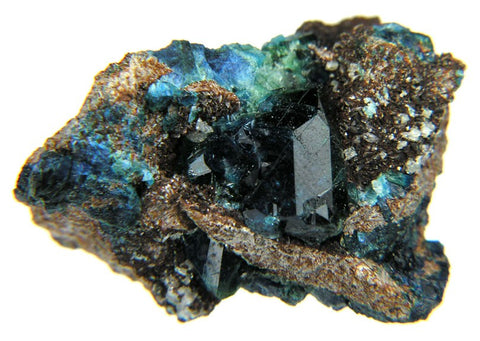
The allure of Lazulite stems from its visual splendour. Exhibiting a range of colours from azure-blue to green, with deep blue shades being the most valuable, lazulite is a feast for the eyes. Lazulite can also appear in black, blue, and blue-green hues, and sometimes as bluish white or even colourless crystals. Its crystal habit varies from tabular to granular, and it can occur in massive form as well as crystalline forms. Lazulite can range from opaque to translucent, which affects its suitability for cutting into gemstones. It exhibits strong pleochroism, revealing different shades of blue at various viewing angles.
This strong visual appeal and its extreme rarity make high-quality faceted lazulite especially valuable in the gemstone market.
Colour Variations
Lazulite's colour variations are a spectacle to behold. Influenced by the presence of iron, magnesium, and aluminum within its crystal structure, lazulite exhibits an array of shades, from deep ocean blues to serene sky blues and even rare pink varieties. These captivating hues contribute to the gemstone's calming visual effect, making it truly alluring.
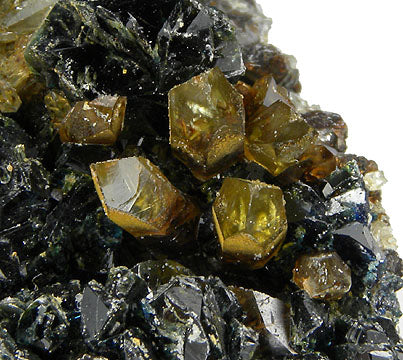
Crystal Structure and Inclusions
The unique crystal structure and inclusions of Lazulite further add to its allure. The mineral features:
-
a monoclinic and prismatic crystal structure
-
encompassing masses, grains, pyramidal, and tabular formations
-
crystals that exhibit pleochroism, causing different shades of blue to be visible from various angles
These characteristics enhance the physical body’s visual appeal.
Common inclusions within lazulite crystals include healed fractures, feathers, and single or two-phase inclusions containing liquid and gas. Gas inclusions are especially common, forming naturally during the gemstone’s creation and generally having minimal impact on its beauty or value. However, these natural inclusions and fractures can increase fragility, making lazulites susceptible to damage during cutting; careful handling is essential. Small gems tend to be highly included and are more likely to fracture, making protective settings important when using lazulite in jewelry.
Distinguishing Lazulite from Similar Gemstones
Even with its distinct allure, lazulite is often confused with other blue minerals such as azurite, sodalite, and lapis lazuli due to its colour. However, a closer look reveals that each of these stones possesses unique properties that set them apart.
Take Azurite as an example. It’s known for its deep blue colour and is a copper-based pigment. In contrast, lazulite, lacking copper, exhibits a lighter, brighter blue hue and is non-fluorescent, helping distinguish it from some similar minerals.
Similarly, sodalite, a member of the feldspathoid mineral group, typically showcases a less striking and darker blue colour compared to the bright blue hue of lazulite, a member of the phosphate mineral class.
Lazulite vs. Lapis Lazuli
When compared to lapis lazuli, another popular blue gemstone, lazulite holds its own. While both stones share a striking blue hue, pairing them together can enhance spirituality, knowledge, and intuition, offering a synergistic combination of healing energies.
So, whether you're seeking spiritual enlightenment or simply a stunning piece of jewelry, a combination of lazulite and lapis lazuli is a choice worth considering.
Lazulite vs. Sodalite
Comparing lazulite to sodalite reveals another distinct contrast. While sodalite may have a mottled appearance and include white calcite crystals in a coarse vein pattern, lazulite typically exhibits a more uniform blue colour.
Interestingly, combining these two stones can enhance communication skills, offering an unexpected benefit of this unique pairing.
Lazulite and Water
Lazulite, a relatively rare mineral celebrated for its captivating blue hues, has a fascinating and intricate relationship with water, deeply rooted in its chemical and physical properties. The mineral’s formula, MgAl2(PO4)2(OH)2, features hydroxide ions (OH)2, which play a crucial role in both its formation and its signature colour palette—ranging from light blue and sky blue to azure blue and even blue green. These hydroxide ions are essential in the mineral’s crystal structure, allowing lazulite to absorb and reflect light in ways that produce its prized blue shades.
Lazulite typically forms in metamorphic rocks, where the presence of water, high pressure, and elevated temperatures drive the transformation of minerals deep within the Earth’s crust. This process often results in lazulite occurring alongside other minerals, most notably quartz. Notable localities such as Rapid Creek in Canada and the Champion Mine in Mono County, California, are renowned for producing exceptional lazulite specimens, often found in granular or massive forms. Collectors highly seek after these prized specimens for their vibrant colour and unique associations with other minerals.
When it comes to physical interaction with water, lazulite is generally stable and does not dissolve easily, thanks to its robust crystal structure. However, prolonged exposure to moisture can gradually alter its surface or affect its chemical composition, making careful handling important. For cleaning, use a soft brush and a mild detergent in warm water to gently remove dirt or residue without risking damage to the stone. Avoiding harsh chemicals and excessive moisture will help preserve lazulite’s natural beauty and lustre.
Beyond its physical properties, lazulite’s blue colour and water connection have inspired spiritual and energetic associations. The stone’s calming blue tones are often associated with the soothing qualities of water, resonating with the throat and third-eye chakras to promote clear communication, intuition, and spiritual awareness. While these attributes are more metaphysical than mineralogical, they add another layer of allure to this rare mineral.
In summary, lazulite’s relationship with water is as complex as it is captivating. From its formation in metamorphic terrains and its association with minerals like quartz, to its care and spiritual symbolism, lazulite stands out as a truly prized gemstone in the mineral world. Whether admired for its physical properties or its energetic resonance, lazulite’s connection to water only enhances its status as a collector’s treasure.
Lazulite in Jewelry
Lazulite’s captivating blue tones—ranging from light blue to sky blue—make it a standout choice for jewelry lovers seeking something truly unique. As a relatively rare mineral, lazulite is seldom seen in mainstream jewelry, and its use is typically reserved for collectors or those who appreciate rare mineral specimens. The stone’s alluring blue colour, sometimes reminiscent of a clear summer sky, is especially prized when found in transparent, faceted form.
Faceted lazulite gems are extremely rare, with even small gems tending to be highly sought after by connoisseurs. Faceted gems of lazulite are typically small, usually ranging from 0.5 to 2 carats, and are difficult to cut due to the mineral's brittleness. Larger faceted lazulite stones are almost unheard of, making any faceted lazulite a true collector’s treasure. High-quality or rare faceted gems can sell for significant sums, with some pieces commanding thousands of dollars. Because lazulite is a rare mineral with a hardness of 5 to 6 on the Mohs scale, it is more susceptible to scratches and damage than harder gemstones. For this reason, lazulite is most often set in jewelry pieces that are less likely to encounter rough wear, such as pendants or earrings, rather than rings or bracelets.
When you encounter lazulite in jewelry, you’re not just wearing a beautiful blue stone—you’re showcasing a piece of the earth’s artistry that is both rare and prized. Its sky-blue and light-blue hues, combined with its rarity, ensure that lazulite jewelry remains a conversation starter and a cherished addition to any collection.
Caring for Lazulite
To preserve the beauty and integrity of your lazulite stone, proper care is essential. As a rare mineral, lazulite requires gentle handling to maintain its vibrant colour and smooth surface. When cleaning lazulite jewelry or mineral specimens, use a soft brush with a mild detergent solution in warm water. Gently scrub the stone to remove any dirt or oils, then rinse thoroughly and dry with a soft cloth to avoid water spots.
It’s important to keep lazulite separate from harder stones, such as quartz, to prevent accidental scratching. Store your lazulite pieces in a padded jewelry box or wrap them in a soft cloth, ensuring they don’t come into contact with other minerals or harder gemstones. Avoid exposing lazulite to harsh chemicals, ultrasonic cleaners, or steam cleaning, as these can damage the stone’s surface and diminish its natural lustre.
For long-term preservation, keep lazulite specimens and jewelry in a cool, dry place, away from direct sunlight, as sunlight can sometimes cause fading in coloured stones. By following these simple care guidelines, you can enjoy the rare beauty of your lazulite for years to come, whether you’re admiring a faceted gem or a natural mineral specimen.
Embracing Lazulite's Healing Energies
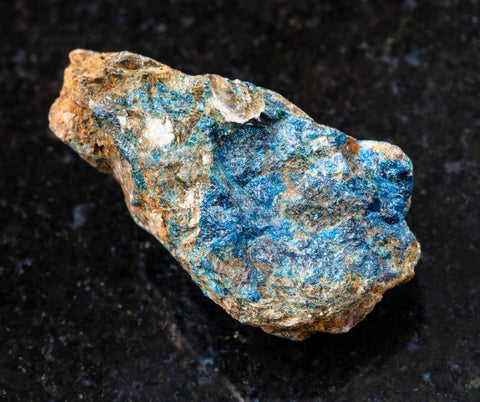
Aside from its visual appeal, this stone also boasts powerful healing properties. These properties span the physical, emotional, and spiritual realms, making it a versatile tool for holistic wellness.
Physically, lazulite is believed to support the immune system, particularly by positively affecting the lymphatic system. It can alleviate:
-
migraines
-
headaches
-
toothaches
-
eye strain
offering sensory comfort.
While many people find value in the metaphysical and healing properties attributed to stones and crystals, it's important to note that these beliefs are anecdotal and lack scientific evidence.
Physical Healing Properties
In addition to promoting general wellness, lazulite also offers specific physical healing benefits. It aids in repairing sprains and fractures and facilitates recovery from burns, bruises, and liver problems. It's also said to contribute to digestive health by preventing stomach problems and promoting internal balance. Additionally, lazulite's energy can break the dependence on harmful substances, making it a useful ally in overcoming negative habits associated with addiction.
Emotional Healing Properties
In the realm of emotional well-being, lazulite fosters peace, nurtures self-reflection, and revives lost confidence. It helps balance emotions and mental stability, which is crucial for maintaining a positive atmosphere and enhancing self-discipline.
By promoting mental clarity and stability, lazulite reinforces energy waves, leading to better neurological functions and mental coherence. Lazulite can be a supportive companion whether you're navigating a challenging period or simply seeking emotional balance.
Chakra Healing and Spiritual Growth
In the spiritual sense, lazulite stands out as a beacon of growth and enlightenment. It has the following properties:
-
Balances the third eye chakra, associated with intuition, insight, and spiritual awareness
-
Leads to heightened perception and intuitive insights
-
Enhances connections to higher realms
-
Expands consciousness
-
Offers mystical knowledge, including access to Akashic records
Lazulite can serve as a powerful guide if you're beginning your spiritual journey or are well on your path.
Harnessing Lazulite's Metaphysical Powers
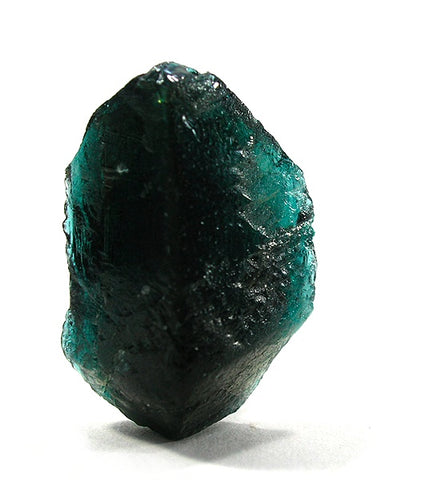
The Lazulite metaphysical properties transcend the physical and emotional spheres. This gemstone is known to:
-
Enhance psychic awareness
-
Facilitate astral travel
-
Improve dream recall
-
Promote spiritual development
The stone's aura, filled with positive energy, enhances psychic awareness, deepening understanding of conscious experiences, subconscious thoughts, and feelings in both the physical and spiritual realms. It also facilitates deep meditative states and peak brain functioning.
Lazulite enhances intuition by bridging the gap between the earthly and spiritual realms, facilitating psychic exploration and the development of supernatural abilities.
Meditation and Grounding Techniques

Employing meditation and grounding techniques is one way to tap into Lazulite's metaphysical powers. The calming energy of lazulite makes it an effective stone for deep meditation, inducing relaxation and emotional stability. Using lazulite during meditation can uplift and guide individuals on their spiritual journey, facilitating a stronger and clearer spiritual connection.
So, whether you're seeking clarity or tranquillity, incorporating lazulite into your meditation practices can help you achieve deep meditative states and bring about transformative experiences.
Psychic Abilities and Spiritual Exploration
Moreover, Lazulite has several benefits, including:
-
Bolstering psychic abilities
-
Encouraging spiritual exploration
-
Resonating with the third eye chakra
-
Increasing intuitive power
-
Balancing the energies of Yin and Yang
-
Enhancing psychic abilities such as clairvoyance and ESP
It facilitates the exploration of past lives and helps understand the connection between these past events and present and future outcomes. Whether you're interested in astral travel, exploring alternate lives, or seeking a deeper understanding of your dreams, lazulite can be a valuable tool on your spiritual journey.
Crystal Combinations: Amplifying Lazulite's Energy
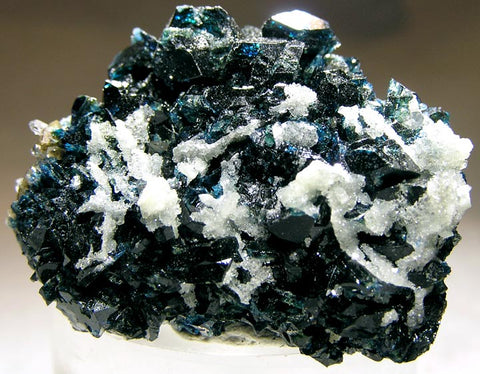
Pairing Lazulite with other stones can further magnify its energy. Combining lazulite with stones such as amethyst, clear quartz, and sodalite can significantly enhance its healing properties and amplify its energy. Each stone brings its unique properties to the mix, creating a powerful synergy that can elevate your healing and spiritual practices to new heights.
So, if you're looking to maximize the benefits of lazulite, consider exploring these crystal combinations.
Summary
In conclusion, lazulite is indeed a gemstone of many fascinations. Its captivating blue hues, unique formation, and widespread geographical presence make it a marvel of the mineral world. But beyond its physical allure, lazulite is a powerhouse of healing, offering support for physical well-being, emotional balance, and spiritual growth. Its metaphysical properties further enhance its appeal, fostering psychic awareness, facilitating astral travel, and promoting intuitive insights.
Whether you're a gemstone enthusiast, a spiritual seeker, or someone interested in holistic healing, lazulite offers a wealth of benefits. Its energy can uplift, heal, and guide, making it a valuable ally on your journey toward well-being and enlightenment. So, if you're drawn to its azure allure, why not delve deeper and discover the many wonders of lazulite for yourself?
Frequently Asked Questions
What is the benefit of lazulite crystal?
Lazulite crystal offers benefits such as amplifying the energy of affirmations, enhancing the effects of subliminal audio programs, aiding in dream work, achieving deep meditative states, and tuning into other levels of reality. Incorporating it into your practices can bring about these advantages.
Is lazulite a rare mineral?
Yes, lazulite is a rare mineral that occurs in aluminum-bearing quartzites, quartz veins, and granite pegmatites. It is known for its bright blue colour and is not commonly found.
What is the meaning of lazulite?
The meaning of lazulite is "Clarity of Thought and Wisdom," deriving from the Persian and Arabic words for the stone's vivid blue colour.
Is lapis lazuli the same as lazulite?
No, lapis lazuli and lazulite are not the same. Lapis lazuli is composed of several minerals, including lazurite, while lazulite is a rare phosphate mineral composed of magnesium, iron, aluminum, and phosphate. This provides a clear distinction between the two.
Where is lazulite commonly found?
Lazulite is commonly found in various locations worldwide, including the Ural Mountains of Russia, Austria, Canada, the United States, Sweden, Madagascar, India, and Brazil.









